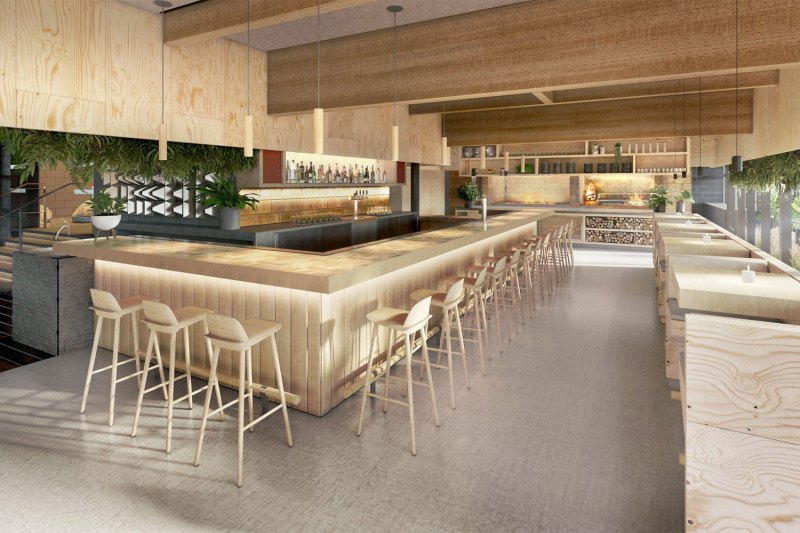While restaurants brace for a long and painful quarantine period, it’s nice to distract ourselves with some good news, even if it’s a few months out.
One of the more interesting restaurant openings in the country was set to take place this spring in Portland. Named Takibi, it’s an unexpected union between a Japanese outdoors brand (Snow Peak) and a restaurant. While delayed as a result of the current uncertain circumstances, the restaurant still hopes to open sometime in July.
Takibi is notable even within the culinary-rich Pacific Northwest landscape: The eatery combines a Michelin-recognized chef in Alex Kim with cocktail guru Jim Meehan. Kim has logged hours in some of the finest restaurants on the planet, from Kajitsu and Rintaro in the U.S. to Kappo Sakamoto and Kikunoi Honten in Japan. Meehan is largely considered to be the most influential cocktail writer of his generation, with books, bars, and mixology products to his name.

If glamping had its own cuisine, this might be it. At the core of the culinary style is “takibi” itself, which translates to bonfire in Japanese. The idea is that the food will be shared and as for the flame, inspired by a nifty Snow Peak gadget of the same name. Per Japanese culture, it’s clean, cool, and aesthetically pleasing. While American cookouts tend to be draped in sauces and wet naps, this version feels neater, tidier, and more artistic.
Chef Kim says that what inspires him most about Japanese cuisine is its depth. “There are almost endless facets,” he says. “So it’s always exciting to me because there will always be something to learn. I was always inspired by its simplicity and timeless quality, and the fact that it is a cuisine that celebrates the color, shape, and taste of each ingredient as it is.”
That kind of singular attention may play out very interestingly in the Willamette Valley, where there are endless seasonal ingredients. It’s a major reason so many chefs and culinary minds land in the Portland area. “We are driven by the products that are unique to Oregon and the Pacific Northwest and create dishes that are unbounded by but see through the lens of Japanese cuisine,” says Kim of the Takibi approach.
Kim benefits from ample time spent in Japan and the mindset that comes with it. “I learned how important it is to consider the guest in every single way beyond the food,” he says. “I also learned how to think and see things from a different perspective, and again that does not apply strictly to the food.” If Takibi can harness both the holistic hospitality mindset he absorbed from Kyoto and Oregon’s bountiful farms, fisheries, orchards, and more, it will be well worth the wait.

Snow Peak came about in the late 1950s. A Japanese mountaineer from the rugged Niigata Prefecture was in need of better equipment so he started making it himself. The brand has gone on to become one of the most stylish outfitters of the outdoors crowd, responsible for clothes as well as trek-ready kitchen gear, furniture, and camping accompaniments. It’s a sleep-under-the-stars version of Muji.
Takibi’s cross-brand take is interesting and perhaps a sign of things to come in the constantly changing culinary realm. With camping food largely viewed as a necessity as opposed to a luxury, at least in this country, the restaurant is worth tracking. And that’s without even mentioning what’s sure to be a fine cocktail menu by Meehan, and chef Kim’s award-winning past.
If you can’t wait for the place to open or we’re still stuck in quarantine come summer, you can try your own hand at takibi from your backyard.
Editors' Recommendations
- Meet the Queens-Based Chef Innovating Japanese Fine Dining
- The Ultimate Guide To Korean Cuisine With Chef Chris Oh
- The Ultimate Guide To Lebanese Cuisine, a Rich and Distinct Food Culture
- Looking For Dangerous Cuisine? Why Not Try Fugu?
- Understanding the Burgeoning World of Japanese Wine


